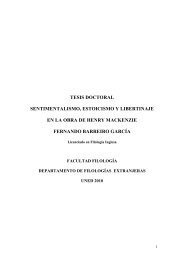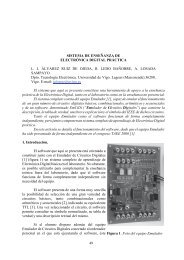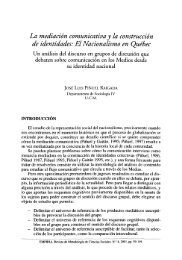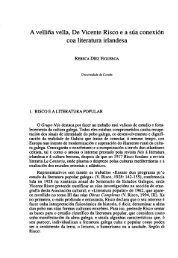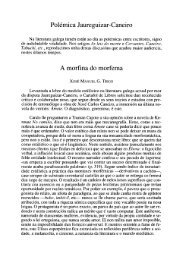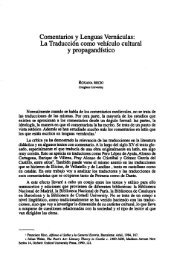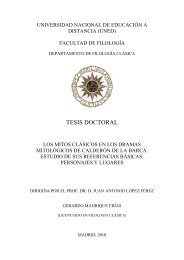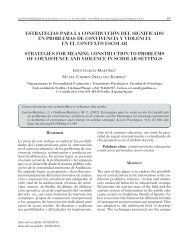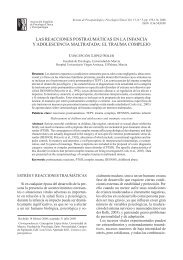Pdf del documento - e-spacio UNED
Pdf del documento - e-spacio UNED
Pdf del documento - e-spacio UNED
Create successful ePaper yourself
Turn your PDF publications into a flip-book with our unique Google optimized e-Paper software.
La arqueología prehistórica y protohistórica española en el siglo xix<br />
the social, cultural and scientific milleu in Spain at the time. In the process<br />
various more specific pieces of work have been carried out among which<br />
it is possible to highiight the following:<br />
— The analysis of the various study mo<strong>del</strong>s for the prehistoric and<br />
protohistoric objects which existed in the XIX century.<br />
— The establishment of a periodisation in the development of prehistoric<br />
Science, according to the stages which developed from its birth<br />
up until the beginning of the XX century.<br />
— The observation of the relationship between different scientific societies<br />
créate at this point in time and the Ímpetus they gave to<br />
Prehistoric Science.<br />
— Research into the biographies of those people who initiated research<br />
into prehistory in Spain and their work in this field. The work carried<br />
out by foreign prehistorians and protohistorians such as Vernau,<br />
Harlé, Cartailhac, Siret, Paris, Engel, Hübner and Bonsor, in Spain,<br />
has been particularly valued.<br />
— The most important Portugueses research into prehistory of the previous<br />
century has also been included due to its proximity with Spain<br />
and the pan-iberian stance in the XIX century.<br />
Among the most important conclusions one must point out that prehistoric<br />
Science has taken shape in the XIX century. The discovery in 1862<br />
of the flint axe of San Isidro by Verneuil, Luis Lartet and Casiano de Prado,<br />
and it being catalogued at that time as being from the Stone Age, may<br />
be considered the commencemet in Spain of a discipline which had already<br />
been evolving since the beginning of the century, both in Spain and<br />
in the rest of Europe. One aspect to point out is the trend towards autochthonism<br />
on the part of the Spanish prehistorians, who avoided the<br />
existence of a «hiatus», defending the existence of periods such as the<br />
«Mesolithic» period and the «Copper Age».<br />
411




